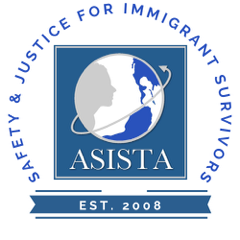U Visas in the Employment Context
This library contains information about U visas in the employment context and decisions on workplace-based U visas.
U Visas in the Employment Context
NELP Practice Manual: U visas for Victims of Crime in the Workplace (May 2014)
This practice manual has several templates for requests to DOL (Eunice H. Cho).
Order Granting Motion for Protective Order Regarding U Visa Information (May 14, 2018)
We recently won a good order from a federal district court judge in Eastern Washington granting our motion for protective order regarding u visa information. The court prohibited all discovery of a u visa information and documents in a case where we represent five farmworker women on sexual harassment and retaliation claims. The decision makes clear that a pending u visa petition does not diminish the chilling effect of such discovery, and continues to rely on Rivera v. NIBCO as the guiding law on this issue in the Ninth Circuit. A great outcome in our case, and one that we hope can be used elsewhere to argue this issue. State of Washington and Diaz Silvas et al. v. Horning Brothers, NO. 2:17-CV-0149-TOR, 2018 WL 2208215 (E.D. Wash., May 14, 2018)
Revised DHS-DOL Worksite Enforcement MOU (May 20, 2016)
NILC and NELP recently updated the fact sheet on the DHS-DOL worksite enforcement MOU in light of the recent announcement that the EEOC and NLRB have been added to the MOU.
Addendum to the Revised DHS-DOL MOU (May 6, 2016)
Addendum of the revised MOU between the Department of Homeland Security and Labor concerning enforcement activities at worksite.
A New Understanding of Substantial Abuse (2014)
Evaluation harm in U visa petitions for immigrant victims of workplace crimes (Authors: Eunice H. Cho, Giselle Hass, and Leticia Salcedo)
Effectively Framing a Workplace-Base U Visa Application (June 17, 2013)
Gail Pendleton of ASISTA and Eunice Cho of the National Employment Law Project discuss best practices in framing U cases arising in the workplace, including: framing the qualifying crime, obtaining useful certifications, identifying and presenting substantial harm and inadmissibility waiver arguments; and organizing your application to achieve success. The presenters also discuss strategies for responding to requests for evidence and tackling emerging legal and policy issues arising in this dynamic area of practice.
Letter to USICS on Substantial Abuse Determination (March 28, 2013)
This letter is the result of collaboration between NELP, Dr. Giselle Hass, and ASISTA, to develop a framework for USCIS and advocates to identify factors on substantial abuse in the workplace. The framework builds on theories of abuse suffered by immigrant survivors in cases of domestic and sexual abuse, which form the bulk of cases currently granted U visas.
DOL Memo: Human Trafficking, Training and Employment Guidance (October 24, 2012)
U.S. Department of Labor memo on the role of the public workforce system in the delivery of services and referrals to victims of human trafficking.
The U Visa: A Potential Immigration Remedy for Immigrant Workers Facing Labor Abuse (November 2011)
Prepared by the National Employment Law Project (NELP).
Agency Decisions on Workplace-Based U visas
AAO Decision Us can Overcome Reinstatement (January 12, 2017)
Many thanks to Rekha Sharma-Crawford for pursuing this case to AAO, vindicating our long-posited argument that a 212(a)(9)(C) waiver eliminates the underlying predicate for 241(a)(5)
AAO Reverses VSC Workplace-Based U Visa Denials (January 5, 2015)
AAO decision finding substantial harm from witness tampering, and remanding to the VSC #1.
AAO Reverses VSC Workplace-Based U Visa Denials (December 19, 2014)
AAO decision finding substantial harm from witness tampering, and remanding to the VSC #2.
AAO Reverses VSC Workplace-Based U Visa Denials (December 19, 2014)
AAO decision finding substantial harm from witness tampering, and remanding to the VSC #3.
AAO Reverses VSC Workplace-Based U Visa Denials (December 19, 2014)
AAO decision finding substantial harm from witness tampering, and remanding to the VSC #4.
